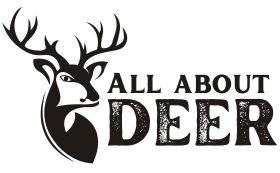Père David's Deer, also known as Milu, is a captivating member of the deer family with a history as unique as its appearance. Native to China, this species was once extinct in the wild, but thanks to conservation efforts, it now thrives in certain regions.
Table of Contents
Species Data
- Class: Mammalia
- Order: Artiodactyla
- Family: Cervidae
- Scientific Name: Elaphurus davidianus
- Life Span: 15 to 20 years
- Height: 130-150 cm (51-59 inches)
- Weight: 300-400 pounds (136-181 kilograms)
Description
Père David's Deer is a large deer species with a unique appearance. They have a chestnut-brown coat, a distinctive white rump, and impressive, flattened antlers. Males (bucks) typically have larger and more complex antlers than females (does).
Appearance
One of the most remarkable features of this deer is the white fur on its neck and throat, resembling a large white bib. Their large, expressive eyes add to their striking appearance.
Behavior
These deer are known for their social behavior, often forming large herds. They are also excellent swimmers and are known to inhabit wetlands and marshes. Père David's Deer are primarily active during dawn and dusk.
Habitat
Historically, they were native to the wetlands and river valleys of China. Today, they are primarily found in managed reserves and parks, given their previous extinction in the wild.
Diet and Nutrition
Their diet consists of a variety of vegetation, including grasses, aquatic plants, and shrubs. They are selective grazers, choosing the most nutritious plants.
Mating Habits
Père David's Deer typically mate in late fall, with a gestation period of about 270 days. Female deer give birth to a single fawn, which they protect and nurture within the safety of their social herds.
Mating Behavior
- Reproduction Season: Late fall
- Pregnancy Duration: Approximately 270 days
- Baby Carrying: Females keep their fawns within the safety of the herd
- Independent Age: Fawns become independent at around 6-8 months
- Female Name: Doe
- Male Name: Buck
- Baby Name: Fawn
5 Fun Facts for Kids
- Père David's Deer was extinct in the wild for nearly a century but has been successfully reintroduced into parts of China.
- They are often called “sibuxiang,” which means “four unlikes” in Chinese, referring to their unique combination of characteristics.
- The large, flat antlers of males resemble shovels, making them distinctive among deer species.
- Père David's Deer are highly social and form tight-knit herds for protection.
- Their wetland habitats are crucial for many other species and help maintain the health of these ecosystems.

